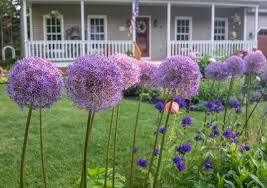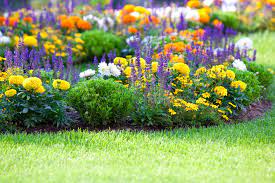Gardening is a rewarding experience, but it often comes with the challenge of dealing with pesky insects. While traditional pesticides can harm both the environment and beneficial bugs, there is a natural and effective solution: insect-repellent plants. These plants not only protect your garden from pests but also bring beauty and fragrance to your outdoor space.
In this article, you’ll discover seven remarkable plants known for their pest-repellent properties. These beauties will help you create a healthier, eco-friendly garden that thrives without the need for harmful chemicals.
1. Lavender (Lavandula)
Lavender is celebrated for its striking purple flowers and calming scent, but it’s also a powerful pest repellent. The aroma of lavender is unpleasant to many insects, including mosquitoes, moths, fleas, and flies. By planting lavender around your garden or home, you can enjoy a lovely fragrance while keeping pests at bay. Its vibrant color and soothing scent also make it a beautiful addition to any garden.
2. Marigolds (Tagetes)
Marigolds are hardy, easy-to-grow flowers that offer both beauty and practicality. The strong scent of marigolds naturally repels pests like aphids, mosquitoes, and nematodes, while attracting beneficial insects such as bees and butterflies. Planting marigolds around vegetable gardens is especially effective in keeping pests away from your crops, making them an essential addition to any pest-free garden.
3. Basil (Ocimum basilicum)
Basil is a popular herb in the kitchen, but it also doubles as a natural insect repellent. Its strong aroma helps keep flies and mosquitoes away, making it perfect for planting around patios or outdoor seating areas. In addition to its pest-repelling qualities, basil adds flavor to your meals and brings a fresh, fragrant touch to your garden.
4. Mint (Mentha)
Mint is another herb that serves a dual purpose in the garden. Its powerful scent repels ants, mosquitoes, and flies, helping to create a pest-free space. However, mint can spread quickly and become invasive, so it’s best to plant it in pots or confined areas to prevent it from taking over your garden. It’s also a versatile herb that can be used in cooking, teas, and even as a garnish.
5. Rosemary (Rosmarinus officinalis)
Rosemary is well-known for its aromatic leaves, which are not only a staple in cooking but also a natural insect deterrent. Its strong scent keeps mosquitoes, cabbage moths, and other pests away, making it an excellent addition to garden beds or near seating areas. Rosemary is also drought-resistant and can thrive in various growing conditions, making it a practical choice for many gardeners.
6. Chrysanthemums (Chrysanthemum morifolium)
Chrysanthemums, or mums, are a vibrant addition to any garden and also pack a powerful punch against pests. These flowers contain pyrethrum, a natural insecticide that is effective against ants, cockroaches, fleas, ticks, and bedbugs. By planting chrysanthemums, you’ll not only add color to your garden but also provide a strong defense against a wide range of pests.
7. Lemongrass (Cymbopogon citratus)
Lemongrass is a fragrant, tall plant known for its citrus scent, which repels mosquitoes and other flying insects. This plant can be used as a decorative border in your garden, creating a natural barrier against pests. Additionally, lemongrass is edible and can be used in cooking, making it a practical and attractive addition to your outdoor space.

Conclusion
By planting these seven insect-repellent beauties in your garden, you can naturally ward off pests while creating a vibrant and pleasant outdoor space. These plants not only help maintain an eco-friendly garden but also reduce your reliance on harmful chemical pesticides. Start incorporating them into your garden today, and enjoy a pest-free paradise all year round!
